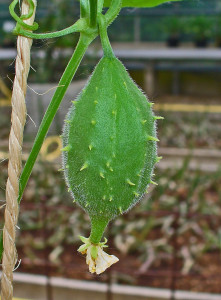Luffa is a plant. When the mature fruit is allowed to dry, a fibrous, sponge-like structure remains. The fibers can be boiled in water, which is then used as medicine.
Contents
Uses
- Luffa is taken by mouth for treating and preventing colds. It is also used for nasal swelling and sinus problems. Some people use it for arthritis pain, muscle pain, andchest pain.
- Women use luffa to restore absent menstrual periods. Nursing mothers use it to increase milk flow.
- Sometimes the whole luffa “sponge” is rubbed against the skin to remove dead skin and stimulate the skin. Luffa charcoal, which is prepared by heating luffa fibers in a closed container, is applied directly to the skin for shingles in the face and eye region.
- In foods, young luffa fruits are eaten as vegetables.
- In cosmetics, powdered luffa is used in skin care products to reduce swelling and “detoxify” the skin.
Cautions
Luffa is LIKELY SAFE for most people when applied directly to the skin as a sponge. However, the safety of using luffa charcoal for shingles is unknown. Luffa is POSSIBLY SAFE when taken by mouth in food amounts. But there isn’t enough information to know if luffa is safe when taken as medicine. The possible side effects of luffa are unknown.
Special Precautions & Warnings:
Pregnancy and breast-feeding: Luffa is POSSIBLY SAFE for pregnant and breast-feeding women in food amounts. But larger medicinal amounts should be avoided until more is known.
Interactions
None are recorded.
Other names
Angled Loofah, Courge Éponge, Courge Torchon, Dishcloth Sponge, Éponge Loofa, Éponge Végétale, Laine Torchon des Antilles, Liane Torchon, Loofa, Loofah, Lufa, Luffa acutangula, Luffa aegyptiaca, Luffa cylindrical, Luffa operculata, Luffaschwamm, Papangaye, Sigualuo, Sponge Cucumber, Vegetable Sponge, Water Gourd
References
Source: Wikipedia, https://en.wikipedia.org/wiki/Luffa_operculata
WebMD, http://www.webmd.com/vitamins-supplements/ingredientmono-194-luffa.aspx?activeingredientid=194

